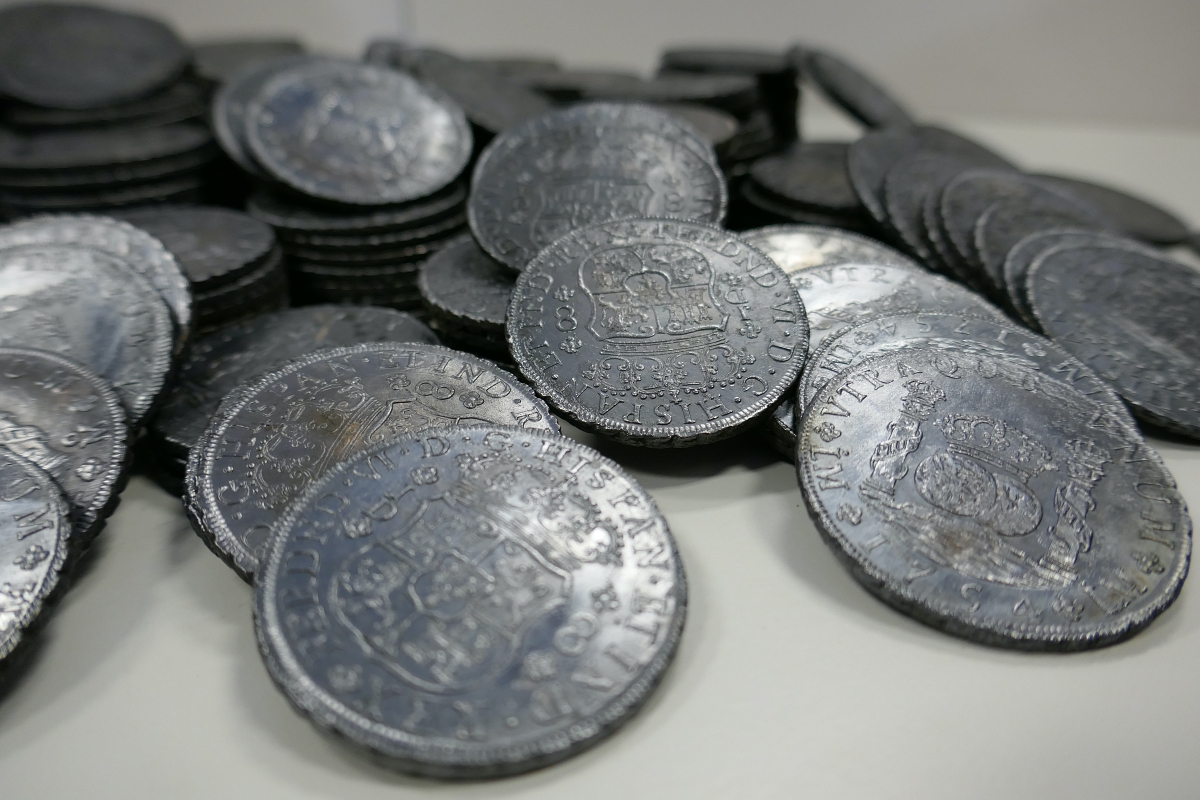The Fascinating History of Pieces of Eight
The coin was beloved around the world, not just by pirates.
In books and movies there are many aspects of pirate life that are dramatized and even during the Golden Age of Piracy in the 1700s the legends about pirates were already full of inaccuracies. Now hundreds of years later there are still some aspects of their lives that are mere speculation. But, one historical detail that is true to life is that they stole gold and pieces of eight. You might not know what this valuable currency is so here’s the fascinating history of pieces of eight.

Pieces of eight may sound like a made up thing, but the coins are made of silver and were an official currency for the country of Spain and all her associated colonies and territories for centuries. From 1497 to 1864 this silver coin was in use as the Spanish dollar (AKA the real de ocho).
While pirates valued a free life and sometimes included women and minorities in positions of power that were unheard of in other parts of society, their booty of gold and silver was primarily mined in Central and South America by indigenous people who were worked to the death by the Spanish in some cases. Much of the silver for pieces of eight came from Silver Mountain in Bolivia. And yet the coin was used all over the globe because it was minted to a more pure silver than other coins.
Many countries -even those not under Spanish control- used the Spanish dollar at various times. Because the purity was so consistent and because so many of them were minted, they became a common currency in Australia for a time and were quite popular in the American Colonies as well. In some territories a supplemental stamp was added to mark them as the local currency (unbeknownst to the Spanish).

American colonists would use the Spanish dollar alongside British currency, as it was against the law for them to create their own money and coins from England were not plentiful. It took eight reales, another Spanish currency, to make up one Spanish dollar. Thus it was known as pieces of eight.
American colonists would sometimes cut the coins into 8 pieces like a pie in order to make change since smaller coins were often scarce.

Along with gold, jewelry, animals, and valuable commodities like alcohol and food, pirates were known to have many coins in their possession. But, the reason many people associate pieces of eight (and parrots) with pirates today is down to Long John Silver’s pet parrot, Cap’n Flint, Treasure Island, who says on repeat, “pieces of eight!”.
There is no factual evidence that pirates kept parrots, but given that the Spanish dollar was popular around the world and particularly prevalent in the Spanish and American colonies (where pirates intercepted ships loaded with cargo being traded between the New World and Old World), pirates certainly were quite familiar with these coins.

Pieces of eight were so well known that when the U.S. became a nation and began to mint their own currency they modeled them on this famed coin. The U.S. quarter at the time was worth 2 of those pie pieces from a piece of eight which is the reason they are sometimes referred to as “two bits” even today.
SKM: below-content placeholderWhizzco for DOT

